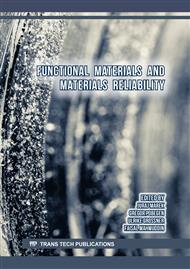p.3
p.13
p.19
p.27
p.35
p.45
p.57
p.75
Crashworthiness Analysis of Vehicle Crash-Box Filled with Aluminium Foam
Abstract:
Lightweight, robust, and anti-rust properties of aluminium foam might be a solution for reducing the effect of traffic accidents and for minimum fuel consumption. This research investigated the crashworthiness of vehicle crash-box filled with aluminum foam by varying its cross-sectional structure and its loading angle such as 0°, 10°, 20°, 30°. The variations consisted of structures for example single wall foam filled and double wall foam filled. The material used to construct the wall was Aluminum Alloy 2024 and Aluminium foam. The finite element model using Abaqus CAE Software was operated for both designing the crash-box and analyzing its crashworthiness. Some parameters were determined To obtain the best crash-box design, the finite element analysis was carried on total energy absorption, specific energy absorption, maximum load, average load, and crush-force efficiency. Double wall foam filled crash-box was shown to have better energy absorption ability and this structure of crush box is considered fpr vehicle structure in future.
Info:
Periodical:
Pages:
13-18
Citation:
Online since:
June 2023
Authors:
Price:
Сopyright:
© 2023 Trans Tech Publications Ltd. All Rights Reserved
Share:
Citation:



